《会计学原理 英文版·第7版》
| 作者 | (美)罗伯特N.安东尼(RobertN.Anthony),( 编者 |
|---|---|
| 出版 | 北京:机械工业出版社 |
| 参考页数 | 686 |
| 出版时间 | 1998(求助前请核对) 目录预览 |
| ISBN号 | 7111064321 — 求助条款 |
| PDF编号 | 81883758(仅供预览,未存储实际文件) |
| 求助格式 | 扫描PDF(若分多册发行,每次仅能受理1册) |
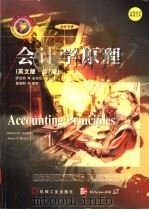
PART 1 FINANCIAL ACCOUNTING1
1 The Nature and Purpose of Accounting,3
The Need for Information,3
Operating Information,5
Financial Accounting,5
Management Accounting,6
Definition of Accounting,7
The Profession of Accounting8
Our Approach to Accounting,9
Preconceptions about Accounting,10
Plan of the Book,10
The Financial Accounting Framework,11
Accounting’s Historical Antecedents,12
Accounting as a Language,13
Nature of Principles,13
Criteria,14
Source of Accounting Principles,15
Financial Statements,17
Financial Statement Objectives,17
Income Tax Reporting,18
2 Basic Accounting Concepts: The Balance Sheet,21
Basic Concepts,21
The Money Measurement Concept,22
The Entity Concept,23
The Going-Concern Concept,24
The Cost Concept,25
The Dual-Aspect Concept,27
The Balance Sheet,28
An Overall View,29
Account Categories,32
Assets,32
Liabilities,35
Owners’ Equity,37
Ratios,40
Balance Sheet Changes,40
Original Capital Contribution,41
Bank Loan,41
Purchase of Merchandise,41
Sale of Merchandise,42
Concluding Comment,42
3 Basic Accounting Concepts: The Income Statement,45
The Nature of Income,45
The Accounting Period Concept,47
Interim Reports,48
Relation between Income and Owners’ Equity,48
Income Not the Same as Increase in Cash,49
The Conservatism Concept,50
Application to Revenue Recognition,51
The Realization Concept,53
The Matching Concept,54
Recognition of Expenses,55
Terminology,55
Criteria for Expense Recognition,55
Expenses and Expenditures,57
Dividends,60
Summary of Expense Measurement,60
Gains and Losses,60
The Consistency Concept,60
The Materiality Concept,62
The Income Statement,63
Revenues,64
Cost of Sales,65
Gross Margin,66
Expenses,66
Net Income,67
Statement of Retained Earnings,67
Relation between Balance Sheet and Income Statement,67
Income Statement Percentages,69
Other Concepts of Income,69
Accrual versus Cash-Basis Accounting,69
Income Tax Accounting,70
Economic Income,71
4 Accounting Records and Systems,73
Recordkeeping Fundamentals,73
The Account,74
Permanent Accounts and Temporary Accounts,75
The Ledger,76
The Chart of Accounts,76
Debit and Credit,77
Transaction Analysis,78
Example: Campus Pizzeria, Inc,78
Balancing Accounts,82
The Trial Balance,83
The Adjusting and Closing Process,84
Adjusting Entries,84
Closing Entries,88
Statement Preparation,90
The journal,91
Summary of the Accounting Process,93
Accounting Systems,93
Special Journals,94
Control Accounts and Subsidiary Ledgers,95
Imprest Funds,95
Internal Accounting Controls,96
Significant Recordkeeping Ideas,97
Computer-Based Accounting Systems,97
What a Computer-Based System Does,98
Relation to Manual Systems,99
Problems with Computer Systems,99
Appendix: Additional Accounting Cycle Procedures,100
Errors Revealed by the Trial Balance,100
The Worksheet,101
5 Revenue and Monetary Assets,103
Timing of Revenue Recognition,103
Basic Recognition Criteria,104
Delivery Method,104
Percentage-of-Completion Method,106
Production Method,108
Installment Method,108
Amount of Revenue Recognized,110
Bad Debts,110
Sales Discounts,113
Credit Card Sales,114
Sales Returns and Allowances,115
Revenue Adjustment versus Expense,115
Warranty Costs,116
Interest Revenue,117
Monetary Assets,119
Difference in Reporting Monetary and Nonmonetary Assets,119
Cash,120
Receivables,120
Marketable Securities,120
Analysis of Monetary Assets,121
Current Ratio,122
Acid-Test Ratio,123
Days’ Cash,123
Days’ Receivables,124
6 Cost of Sales and Inventories,127
Types of Companies,127
Supplies,128
Merchandising Companies,129
Acquisition Cost,129
The Basic Measurement Problem,130
Periodic Inventory Method,131
Perpetual Inventory Method,133
Comparison of Periodic and Perpetual Methods,134
Retail Method,135
Manufacturing Companies,136
Inventory Accounts,136
Materials Used,138
Cost of Goods Manufactured,139
Cost of Goods Sold,140
Product Costing Systems,142
Product Costs aod Period Costs,142
Service Companies,143
Inventory Costing Methods,144
Specific Identification Method,145
Average Cost Method,145
First-In, First-Out Method,146
Last-In, First-Out Method,146
Comparison of Methods,149
Lower of Cost or Market,152
Analysis of Inventory,153
Inventory Turnover,153
7 Long-Lived Assets and Their Amortization,155
Nature of Long-Lived Assets,155
Types of Long-Lived Assets,156
Plant and Equipment:Acquisition,157
Distinction between Asset and Expense,157
Items Included in Cost,158
Acquisitions Recorded at Other than Cost,159
Basket Purchases,160
Plant and Equipment:Depreciation,160
Judgments Required,161
Service Life,162
Depreciation Method,163
Choice of a Depreciation Method,165
Accounting for Depreciation,166
Change in Depreciation Rates,168
Partial Year Depreciation,168
Disclosure,168
Plant and Equipment: Disposal,169
Exchanges and Trade-Ins,170
Group Depreciation,172
Significance of Depreciation,172
Income Tax Considerations,173
Income Tax Depreciation,174
Investment Tax Credit,175
Leased Assets,177
Capital Leases,178
Natural Resources,179
Depletion,180
Accretion and Appreciation,180
Intangible Assets,181
Goodwill,181
Patents, Copyrights, Franchise Rights,182
Leasehold Improvements,183
Deferred Changes,183
Research and Development Costs,184
8 Sources of Capital: Debt,187
Nature of Liabilities,188
Executory Contracts,188
Contingencies,189
Liabilities as a Source of Funds,190
Debt Capital,191
Term Loans,191
Bonds,191
Accounting for Bonds,192
Recording a Bond Issue,192
Balance Sheet Presentation,195
Bond Interest Expense,195
Retirement of Bonds,197
Refunding a Bond Issue,197
Other Liabilities,198
Analysis of Capital Structure,199
Debt Ratios,199
Times Interest Earned,201
Bond Ratings,201
Appendix: Present Value,202
Concept of Present Value,202
Finding Present Values,204
Present Value of a Series of Payments,205
Present Values and Liabilities,206
Present Values and Assets,208
Calculating Bond Yields,208
9 Sources of Capital: Owners’Equity,211
Forms of Business Organization,211
Sole Proprietorship,211
Partnership,212
Corporation,212
Accounting for Proprietor’s and Partners’ Equity,213
Proprietorship Equity,213
Partnership Equity,213
Ownership in a Corporation,215
Preferred Stock,215
Common Stock,216
Treasury Stock,218
Reserves,218
Retained Earnings,219
Dividends,219
Warrants and Stock Options,221
Employee Stock Ownership Plans,222
Balance Sheet Presentation,223
Earnings per Share,223
Common Stock Equivalents,224
The Line between Debt and Equity,225
Zero-Coupon Bonds,225
Redeemable Preferred Stock,226
Equity in Nonprofit Organizations,226
10 Other Items That Affect Net Income,229
Personnel Costs,229
Pensions,231
Other Postretirement Benets,234
Compensated Absences,234
Income Taxes,234
Book-to-Tax Differences,235
Deferred Taxes,237
Accounting Entries,240
Nonoperating Items,244
Extraordinary Items,245
Discontinued Operations,246
Change in Accounting Principles,246
Adjustments to Retained Earnings,247
Foreign Currency Accounting,248
Foreign Currency Transactions,248
Foreign Currency Translation,249
Net Income,251
Accounting and Changing Prices,251
Nature of the Problem,251
Proposed Solutions,252
Related Developments,253
11 The Statement of Cash Flows,255
The Concept of Flow Statements,255
Purpose of the Cash Flow Statement,256
Sources and Uses of Cash,256
The Cash Flow Statement,258
Statement Categories,258
Investing Activities,259
Financing Activities,262
Noncash Transactions,264
Cash Flow from Operating Activities,264
Indirect Method Calculations,265
Summary of the Cash Flow Statement,270
Misconceptions About Depreciation,271
Cash Flow Earnings,272
Preparation of the Cash Flow Statement,272
Cash Flow Worksheet,273
Worksheet Entries,273
Statement Preparation,278
Summary of Preparation Procedures,278
Analysis of the Cash Flow Statement,279
Ratios,280
Cash Flow Projections,281
12 Acquisitions and Consolidated Statements,283
Accounting for Investments,283
Fair-Value Method,283
Equity Method,284
Consolidated Basis,285
Business Combinations,285
Purchase versus Pooling,286
Accounting as a Pooling,287
Accounting as a Purchase,288
Impact on Balance Sheet,289
Impact on Earnings,289
Consolidated Statements,291
Basis for Consolidation,292
Consolidation Procedure,292
Asset Valuation,295
Minority Interest,296
13 Financial Statement Analysis,299
Business Objectives,299
Return on Investment,300
Sound Financial Position,302
Structure of the Analysis,302
Overall Measures,303
Return on Investment,303
Investment Turnover and Profit Margin,307
Price/Earnings Ratio,308
Profitability Ratios,309
Profit Margin,309
Investment Utilization Ratios,310
Investment Turnover,310
Capital Intensity310
Working Capital Measures,311
Financial Condition Ratios,312
Liquidity and Solvency,312
Dividend Policy,312
Growth Measures,313
Making Comparisons,316
Diffiiculties,316
Possible Bases for Comparison,318
Use of Comparisons,319
14 Understanding Financial Statements,321
Additional Information in Annual Reports,321
Auditors’ Opinion,322
Notes to Financial Statements,325
Segment Reporting,326
Full Disclosure,326
Comparative Statements,327
Securities and Exchange Commission (SEC) Reports,328
Review of Criteria and Concepts,328
Criteria,329
Concepts,330
Accounting Alternatives,334
Regulatory Requirements,334
Income Tax Principles,335
Latitude in Methods,335
Basis of Choice,336
Controversies over Principles,337
Implications of These Differences,338
Inherent Limitations,339
Ethical Problems,339
Meaning of the Financial Statements,340
Income Statement,341
Balance Sheet,342
Statement of Cash Flows,344
PART 2 MANAGEMENT ACCOUNTING,347
15 The Nature of Management Accounting,349
Management Accounting as One Type of Information,349
Information,350
Management Accounting,351
Management Accountants,352
Contrast between Management Accounting and Financial Reporting,353
Differences,353
Similarities,356
Source Disciplines,356
Types of Management Accounting Information and Their Uses,357
Measurement,358
Control,359
Alternative Choice Decisions,360
General Observations on Management Accounting,360
Different Numbers for Different Purposes,361
Accounting Numbers Are Approximations,361
Working with Incomplete Data,361
Accounting Evidence Is Only Partial Evidence,362
People, Not Numbers, Get Things Done,362
16 The Behavior of Costs,365
Relation of Costs to Volume,365
Variable and Fixed Costs,365
Cost-Volume Diagrams,367
Relation to Unit Costs,369
Inherent Conditions,370
Linear Assumption,372
Estimating the Cost-Volume Relationship,374
Measures of Volume,377
The Profitgraph,379
Break-Even Volume,380
Operating Leverage,381
Contribution,381
Cash versus Accrual Profitgraphs,385
Using the Profitgraph,385
Several Products,386
Other Influences on Costs,388
Appendix: Learning Curves,390
17 Full Costs and Their Uses,393
Cost Concepts,393
General Definition,394
Cost Object,394
Full Cost,395
Direct and Indirect Costs,395
Applicable Accounting Principles,396
Elements of Product Cost,397
Product Costing Systems,400
Account Flowchart,400
Nonmanufacturing Costs,405
Merchandising Companies,405
Service Organizations,406
Nonprofit Organizations,406
Uses of Full Cost,407
Financial Reporting,407
Analysis of Profitability,408
What Did It Cost?,408
Setting Regulated Prices,408
Product Pricing,408
18 Additional Aspects of Product Costing Systems,413
Job Order Costing and Process Costing,413
Production Processes,413
Averaging,414
Basic Types of Systems,414
Job Order Costing,415
Process Costing,416
Choice of a System,419
Variations in Practice,419
Measurement of Direct Costs,420
Direct Labor Cost,420
Direct Material Cost,422
Direct versus Variable Cost,422
Allocation of Indirect Costs,423
Distinction between Direct and Indirect Costs,423
Nature of Allocation,424
Cost Centers,425
Calculating Overhead Rates,426
Cost Drivers (Allocation Bases),431
Predetermined Overhead Rates,433
Procedure for Establishing Predetermined Rates,434
Underabsorbed and Overabsorbed Overhead,437
Activity-Based Costing,438
Cross Subsidies,439
Activity-Based Costing Concepts,440
19 Standard Costs, Variable Costing Systems, Quality Costs, and Joint Costs,447
Standard Costs,447
Standard Cost Sheet,447
Account Flowchart,449
Variations in the Standard Cost Idea,454
Terminology Ambiguities,454
Uses of Standard Costs,454
Variable Costing Systems,456
Comparison of Absorption and Variable Costing,457
Why Use Full Costing?,461
Quality Costs,463
Joint Products and By-Products,464
Joint-Product Costing,464
By-Product Costing,465
Accuracy of Costs,466
Judgment Calls,466
Tendencies toward Uniformity,467
Cost System Design Choices,467
Appendix A: Standard Costing Illustration,468
System Overview,469
Establishing Standard Costs,469
Accounting Entries,473
Sales and Cost of Sales,474
Appendix B: Absorption versus Variable Costing’s Impact on Income,475
20 Production Cost Variances,477
Direct Material and Labor Variances,477
Direct Material Variances,477
Direct Labor Variances,482
Overhead Variances,483
Production Volume Variance,485
Spending Variance,486
Calculation of Overhead Variances,487
Appendix A: Fixed Costs and the Overhead Volume Variance,491
Appendix B: Three-Part Overhead Variance Analysis493
21 Analyzing Other Variances,495
Overview of the Analytical Process,495
The Need for Variance Analysis,495
Types of Variances,496
Marketing Variances,497
Expense Variances,497
Gross Margin Variances,497
Production Cost Variances,505
Correct Volume Measures,505
Other Variances,507
Complete Analysis,507
Marketing Variances,507
Production Cost Variances,510
Uses of Variances,510
Appendix: Variances with Variable Costing,512
Margin Analysis,512
Other Variances,512
Reconciliation of Income Variance,513
22 Control: The Management Control Environment, 515Management Control,515
The Environment,516
The Nature of Organizations,516
Rules, Guidelines, and Procedures,518
Culture,519
External Environment,519
Responsibility Centers,520
Inputs and Outputs,521
Responsibility Accounting,521
Effectiveness and Efficiency,523
pes of Responsibility Centers,524
Revenue Centers,524
Expense Centers,525
Profit Centers,525
Transfer Prices,527
Investment Centers,530
Nonmonetary Measures,533
23 Control: The Management Control Process,535
Phases of Management Control,535
Strategic Planning,536
Budgeting,537
Measurement and Reporting,537
Evaluation,538
Accounting Information Used in Management Control,538
Controllable Costs,538
Engineered, Discretionary, and Committed Costs,543
Behavioral Aspects of Management Control,545
Behavior of Participants,545
Motivation,546
Incentives,547
Goal Congruence,549
An Example: The Data Processing Department,550
Cooperation and Con ict,551
Other Types of Control,552
24 Strategic Planning and Budgeting,555
Strategic Planning,555
Ongoing Programs,556
Proposed New Programs,558
Formal Strategic Planning Systems,559
Budgeting,559
Uses of the Budget,559
The Master Budget,562
The Operating Budget,562
Project Budgets,562
Flexible (Variable) Budgets,564
Management by Objectives,564
Preparing the Operating Budget,566
Organization for Budget Preparation,566
Budget Timetable,567
Setting Planning Guidelines,567
Preparing the Sales Budget,568
Initial Preparation of Other Budget Components,569
Negotiation,570
Coordination and Review,572
Final Approval and Distribution,573
Revisions,573
Variations in Practice,574
The Cash Budget,575
The Capital Expenditure Budget,576
Project Proposals,576
Authorization,577
Follow Up,577
25 Reporting and Evaluation,579
Control Reports,579
Key Success Factors,579
Types of Management Reports,580
Period of Control Reports,581
Contents of Control Reports,582
Use of Control Reports,586
Steps in the Control Process,588
Reporting and Continuous Improvement,590
Incentive Compensation,591
26 Short-Run Alternative Choice Decisions,593
The Differential Concept,593
Cost Constructions for Various Purposes,593
Differential Costs and Revenues,594
Contrasts with Full Costs,595
Contribution Analysis,596
Types of Cost,598
Alternative Choice Problems,599
Objectives,600
Steps in the Analysis,601
Differential Costs,603
Mechanics of the Calculation,603
Other Terminology,606
Estimates of Future Costs,607
Sunk Costs,607
Importance of the Time Span,609
Example: Operating an Automobile,609
pes of Alternative Choice Problems,610
Problems Involving Costs,611
Problems Involving Both Revenues and Costs,612
Differential Investment,615
Sensitivity Analysis,616
The “Just One” Fallacy,616
Some Practical Pointers,618
Appendix: Useful Decision Models,620
Economic Order Quantity,620
Expected Value,623
Sensitivity Analysis,624
Decision Tree Analysis,624
Linear Programming,627
27 Longer-Run Decisions: Capital Budgeting,631
Nature of the Problem,631
General Approach,632
Return on Investment,633
Estimating the Variables,636
Required Rate of Return,636
Economic Life,638
Cash Inflows,639
Depreciation,640
Investment,643
Terminal Value,644
Nonmonetary Considerations,645
Summary of the Analytical Process,647
Other Methods of Analysis,647
Internal Rate of Return Method,647
Payback Method,649
Unadjusted Return on Investment Method,650
Multiple Decision Criteria,651
Preference Problems,652
Criteria for Preference Problems,653
Comparison of Preference Rules,653
Nonprofit Organizations,654
28 Management Accounting System Design,657
Types of Accounting Information,657
Measurement,658
Control,658
Alternative Choice Problems,658
Relative Importance,659
Cost Categories,659
Designing the Management Accounting System,662
Accounting Database,662
Level of Detail,662
Cost Accounting Systems,664
Management Control Systems,664
Appendix Table A Present Value of $1 Received N Years Hence,667
Appendix Table B Present Value of $1 Received Annually for N Years,668
Index669
1998《会计学原理 英文版·第7版》由于是年代较久的资料都绝版了,几乎不可能购买到实物。如果大家为了学习确实需要,可向博主求助其电子版PDF文件(由(美)罗伯特N.安东尼(RobertN.Anthony),( 1998 北京:机械工业出版社 出版的版本) 。对合法合规的求助,我会当即受理并将下载地址发送给你。
高度相关资料
-
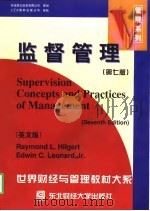
- 监督管理 英文版 第7版
- 1998 沈阳:东北财经大学出版社
-

- 会计学原理 (新版)
- 1993
-
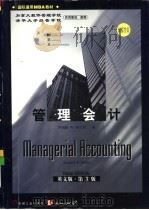
- 管理会计:第3版:英文版
- 1998年07月第1版 机械工业出版社
-
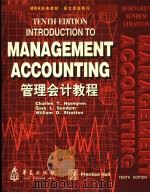
- 管理会计教程 英文版·第10版
- 1998 华夏出版社
-

- 基础会计原理 英文版 第14版
- 1998 沈阳:东北财经大学出版社;McGraw-Hill出版公司
-

- 会计学 英文版 第18版
- 1998 沈阳:东北财经大学出版社
-

- 会计原理 第3版
- 1979 北京:中国铁道出版社
-

- 会计学原理 新版
- 1993 北京:中国商业出版社
-

- 会计理论 英文版 第4版
- 1998 沈阳:东北财经大学出版社
-

- 国际会计学 英文版·第4版
- 1998 北京:机械工业出版社
-

- 人体中的“石头”
- 1999 北京:科学出版社
-

- 管理会计 英文版 第8版
- 1998 沈阳:东北财经大学出版社;McGraw-Hill出版公司
-
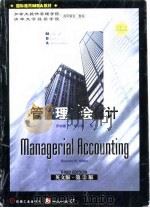
- 管理会计 英文版 第3版
- 1998 北京:机械工业出版社
-

- 会计原理 第2版
- 1993 北京:高等教育出版社
-

- 会计学 第3版英文版
- 1998 北京:清华大学出版社
提示:百度云已更名为百度网盘(百度盘),天翼云盘、微盘下载地址……暂未提供。➥ PDF文字可复制化或转WORD